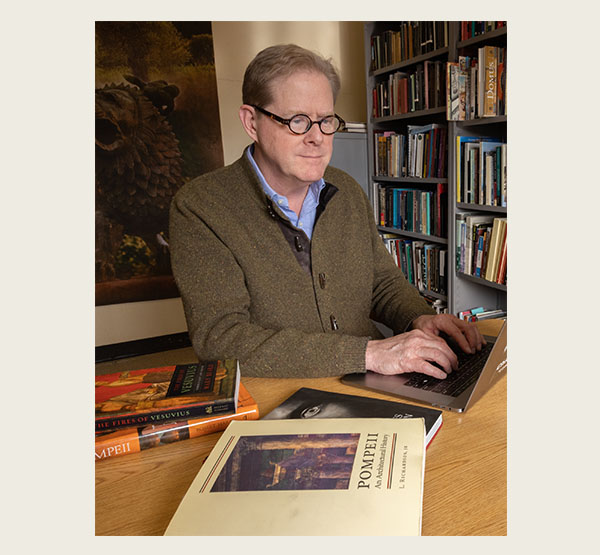Screening of ‘Pompeii: The New Dig’ features Q&A with Miami professor
Steven Tuck, professor of History, appeared in episode 2 of the series
Screening of ‘Pompeii: The New Dig’ features Q&A with Miami professor

Cincinnati Museum Center (CMC), CET-ThinkTV, and Miami University present a one-of-a-kind experience with a special screening of “Pompeii: The New Dig” followed by a Q&A session with Steven Tuck, professor of History at Miami University. This special event will start at 6 p.m. on Saturday, June 8, at Cincinnati Museum Center.
The three-part series, "Pompeii: The New Dig," chronicles the most extensive archaeological excavation in Pompeii in a generation. This monumental project, nearly two years in the making, offers exclusive access to the excavation site and the all-Italian team of archaeologists. The series documents the excavation of an entire city block located in the northern part of the city. Tuck joins the team in their quest for evidence of Pompeiians who might have survived the eruption of Vesuvius.
In episode 2, Tuck begins a pioneering new research project to find potential eruption survivors. He starts by visiting a newly discovered tomb that holds vital clues about the number of people who lived in Pompeii in 79 AD.
“My research has shifted the story from one only about tragic death and complete destruction to one that includes the stories of those who survived the eruption to rebuild lives in other communities,” Tuck said. “I have demonstrated that we can trace some survivors and their families as they settled in new cities, restarted businesses, named their children after the new communities, ran for and won election to public office, and generally started over.”
The excavation aims to unearth the buildings, their purpose, who lived there, and what happened to them during the eruption. Alongside the present tense story of the dig, the series investigates the timeline of the eruption. From the violent earthquakes that shook the city in the years before the eruption to the day of the disaster, Vesuvius first slowly buries Pompeii and then delivers the killer blows in the form of pyroclastic flows.
Tuck sees the importance of studying ancient societies such as Rome, because so much of our society was self-consciously and deliberately built on Rome.
“'What has been will be again, what has been done will be done again; there is nothing new under the sun,' (Ecclesiastes 1.9) sums up the reason,” Tuck said. “Humans haven't changed much in 2,000 years. And the problems and solutions that the Romans faced can provide us with both role models and cautionary tales. In the case of Pompeii, the response to a natural disaster by individuals and all levels of government falls in the role model category. Displaced people were welcomed into their new communities, they took in orphans, they gave back to the cities that sheltered them. And the government responded immediately and efficiently to the crisis.”
In addition to the special screening of “Pompeii: The New Dig,” CMC is featuring POMPEII: The Exhibition, which showcases more than 150 priceless artifacts from historic Pompeii at the height of the Roman Empire, just moments before the catastrophic eruption of Mount Vesuvius.